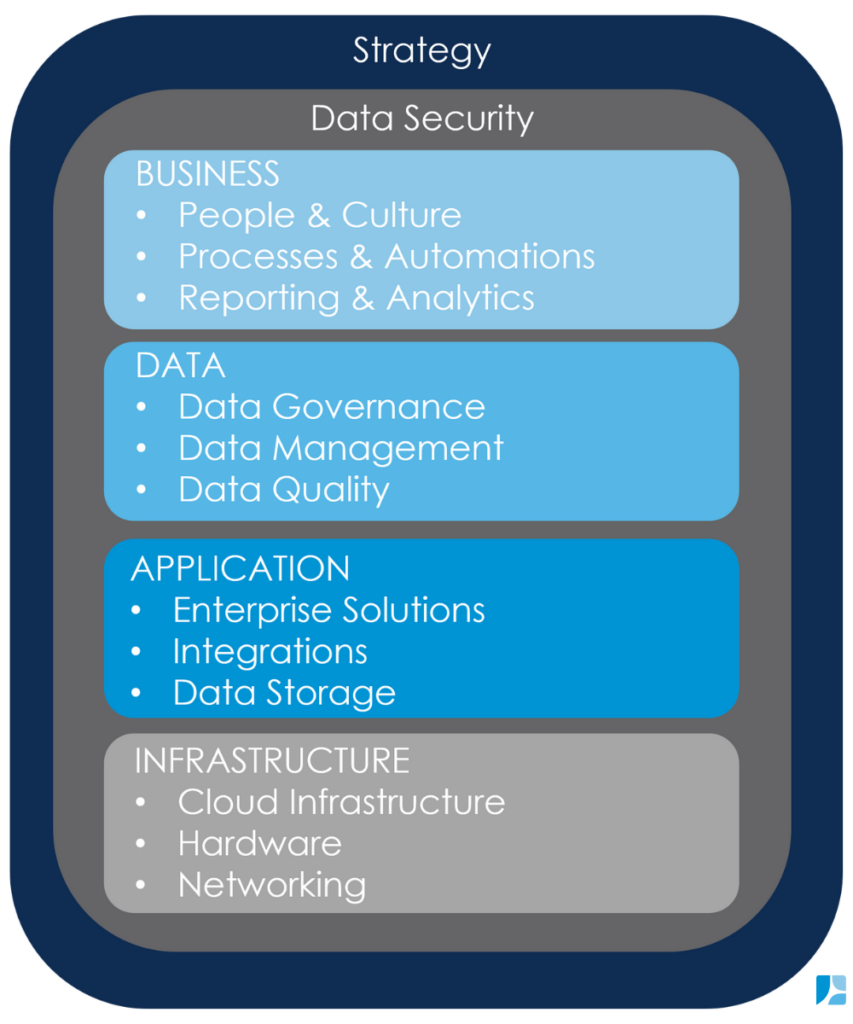The Hidden Force Driving Nonprofit Success: Your Data Ecosystem

Liz Murray
Vice President, Professional Services
When you think about your data, you’re likely to picture the information you handle every day. A gift processor may envision rows of transactional records, while a fundraiser might see a pipeline of prospects or a gift chart mapping donor engagement. Your data may have many homes—some formal, like a centralized database or data warehouse, and other more informal, such as spreadsheets, apps, and even in your brain. Your data may be shared with others or kept to yourself. Your organization may control and manage data with different levels of autonomy and coordination.
We often get so wrapped up in the details of how we individually use data on a daily basis that we lose sight of the bigger picture: your organization operates within a vast, interconnected data ecosystem. Every process, tool, and decision influence this system, whether we realize it or not. Understanding how these elements interact is key to unlocking efficiency, alignment, and long-term success.
Before we dive into why this matters, let’s explore what makes up a data ecosystem and how it shapes your organization’s ability to achieve its mission.
What is a Data Ecosystem?
A data ecosystem is a framework that illustrates how people, data, and technology work together as a coordinated system to drive organizational goals. Much like a natural ecosystem, its strength lies in interconnected layers that must function in harmony:
- Business Layer: The top layer—your culture, people, processes, and reporting tools that leverage your data to support your goals and larger strategy.
- Data Layer: Where one of your most important organizational assets—your data—is nurtured. Key components in this layer are data quality, data management, and data governance. Data quality is the desired end goal—you want your data to be accurate, complete, and up-to-date. Data governance refers to the authority, control, and shared decision-making within an organization around data management. Essentially, governance defines the “what” and “why” of data practices, while data management focuses on the “how.” Read more about data governance here.
- Application Layer: The home for your data. Within this layer we see enterprise solutions, integrations, and data storage. Enterprise solutions address organizational needs, while integrations enable seamless data flow across platforms. Data storage, such as data warehouses and lakes, provides a unified platform to extract valuable insights from your data.
- Infrastructure Layer: The IT components required to physically support your data ecosystem, such as hardware, cloud infrastructure, networking, or other physical resources.
Surrounding and protecting this ecosystem is data security, ensuring that sensitive information remains safeguarded. Encompassing it all is strategy, guiding every decision and ensuring that your data ecosystem evolves to serve your mission effectively.

By understanding and optimizing these layers, you’re not just managing data—you’re empowering your organization to work smarter, make informed decisions, and ultimately create greater impact.
The Power of a Well-Managed Data Ecosystem
A thriving data ecosystem is more than just a collection of systems and processes—it’s a living, interconnected network that evolves alongside your organization. Much like natural ecosystems, where every element plays a vital role, your data ecosystem requires careful stewardship to function effectively. A small change in one area can have far-reaching consequences, making it essential to approach data management with a holistic perspective.
Modern organizations generate vast amounts of data through daily operations, and managing this data effectively is key to maximizing impact. By nurturing a well-aligned data ecosystem, you can:
- Maximize resources – Enable teams to share data and tools efficiently, reducing redundancy and optimizing operations.
- Save time – Streamline workflows through automation, integration, and well-structured processes.
- Drive meaningful change – Move beyond isolated projects and create a strategic, organization-wide approach to transformation.
- Unlock your data’s full potential – Leverage data for better decision-making, deeper engagement with stakeholders, and increased revenue.
How to Strengthen Your Data Ecosystem Today
You don’t need to overhaul everything at once—small, intentional steps can set your organization on the right path. Here’s where to start:
- Build awareness – Share this blog with colleagues and spark conversations about the big picture.
- Think beyond your team – When selecting new tools or designing processes, consider how they impact other departments and explore opportunities for collaboration.
- Identify gaps – Pinpoint areas where poor data management is creating bottlenecks and make the case for adopting a systems approach.
- Foster cross-team collaboration – Establish a technology committee to break down silos and ensure knowledge-sharing across the organization.
Your data ecosystem is a powerful asset—when managed thoughtfully, it becomes a catalyst for efficiency, innovation, and mission-driven success.
If you’re ready to take a more strategic approach to your data ecosystem, we’re here to help. Contact us to learn more.
Let’s Talk!